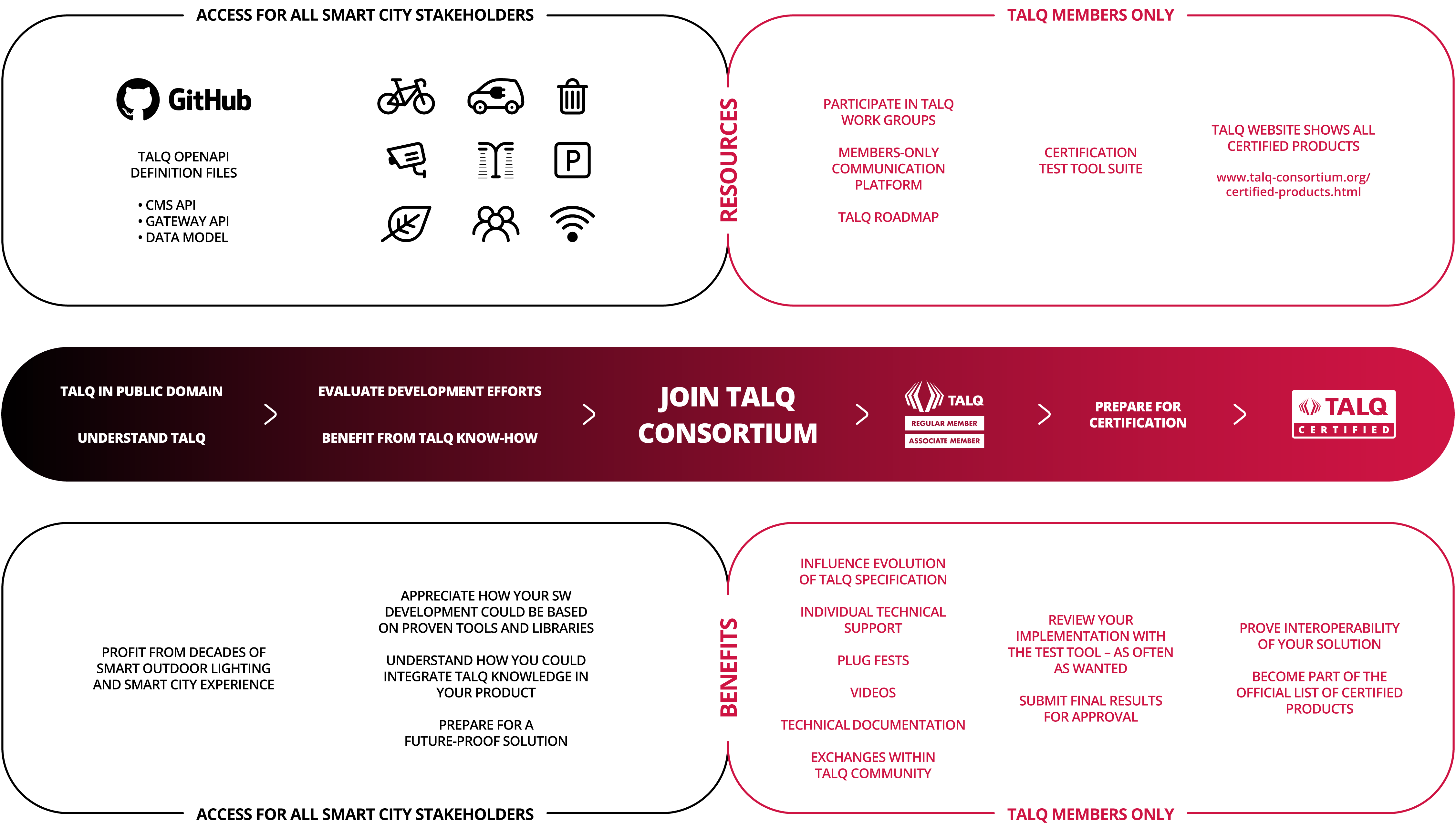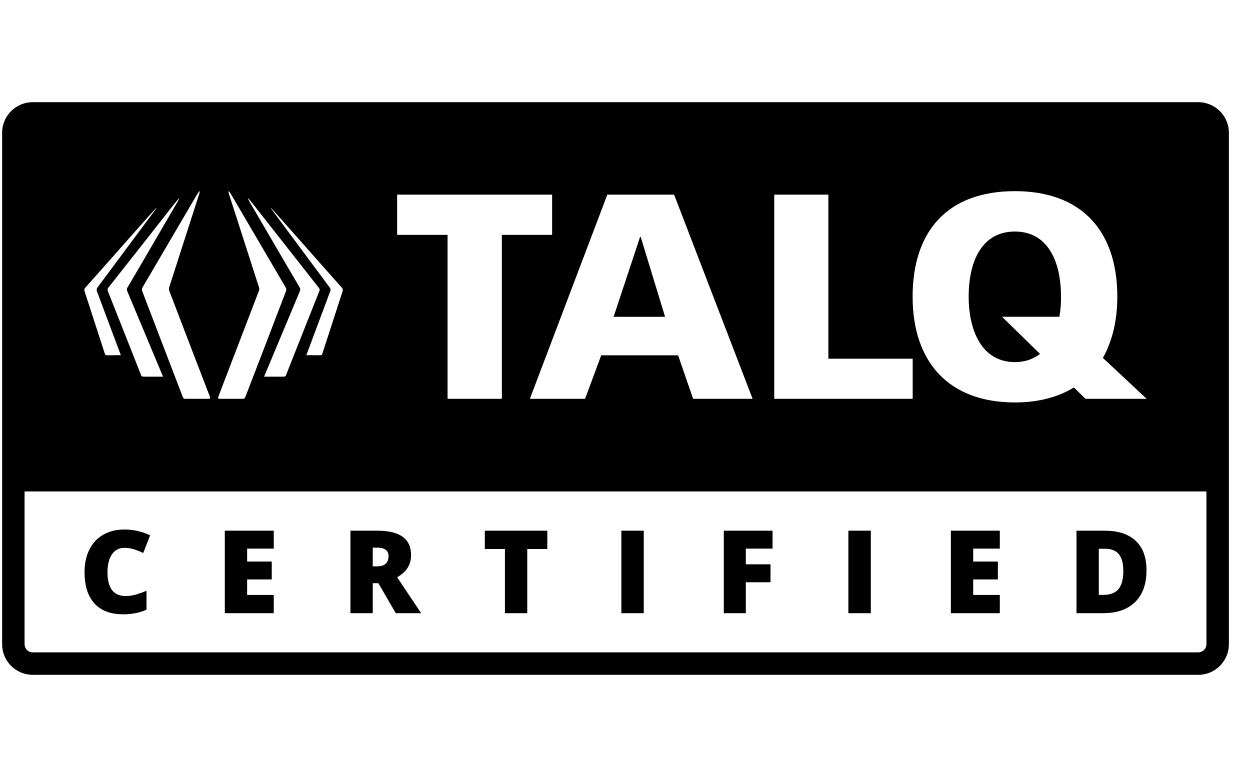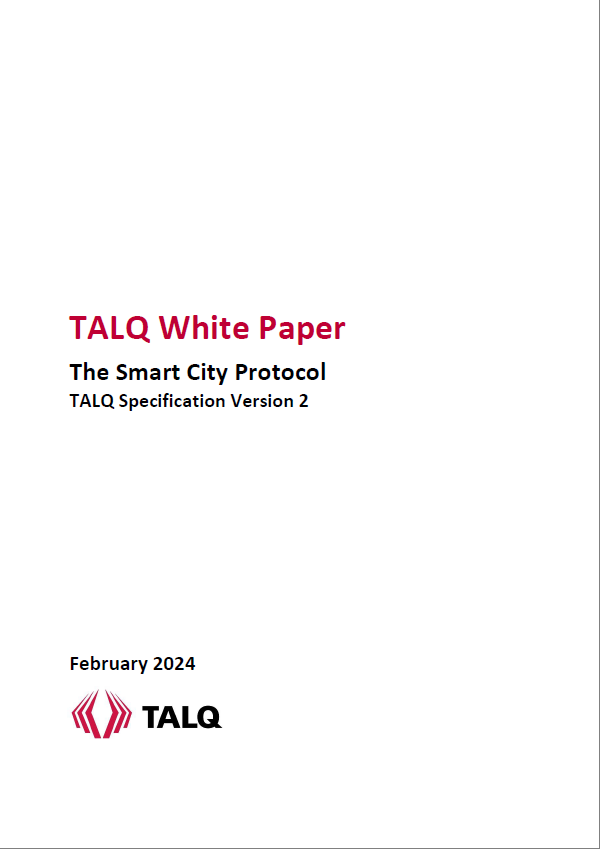TALQ OpenAPI Specification
The Smart City Protocol – an Open Standard
The TALQ consortium widened its scope to smart city applications and in 2018 the protocol was transformed to TALQ Version 2. Besides integrating various other use cases beyond street lighting, the goal was to define an easy to implement specification built on proven, modern software standards. This was achieved by defining the protocol as RESTful APIs using the OpenAPI Specification 3, formerly called Swagger.
In July 2021 the consortium decided to publish the detailed specification and share it on GitHub.

The graphic illustrates resources, such as documents, videos, tools and other services available to members. Open access to the TALQ specification and data mode has made some of these resources available more widely . Product certification and, the Test Suite and influencing the TALQ Specification are restricted to TALQ members.
The openness of the protocol allows manufacturers and all other smart city stakeholders to understand the TALQ data model easily and profit from decades of smart city experience. The strict certification process – available for TALQ members only – enables well tested smart city solutions to be interoperable and confirmed as TALQ-certified. The current list of certified products is available online.
On the TALQ OpenAPI Specification
How can I get access to the TALQ Specification?
The TALQ Specification is accessible for free on GitHub.
What is the exact definition of the TALQ Smart City Protocol?
The TALQ OpenAPI specification is a software (application layer) protocol. It can be implemented in different devices that are used in the systems. The TALQ interface makes sure that different devices from different vendors understand each other, since they talk the same ‘language’.
What is the scope of the specification?
The TALQ interface specifies an application language and protocol for operation and management of Outdoor Device Networks (ODN). This has been identified and confirmed by customers and key players in the lighting and smart city industries as one of the needs to be addressed to increase the market of ODN solutions.
What is the definition of an Outdoor Device Network (ODN)?
A communication network of outdoor devices such as light points controllers, gateways, actuators, sensors, for the purpose of delivering interoperable and future-proof smart city applications.
What is the definition of a Central Management Software (CMS)?
A device (whether hardware, software or combination thereof) which communicates with the ODNs to remotely configure and operate the ODN’s components.
What do you consider to be a Central Management Software?
Think of a Central Management Software as an application server providing a web-services interface or a PC-based GUI (graphic user interface) able to manage the ODN infrastructure, as well as the devices and applications.
Why is TALQ restricted to being an Application specification?
A major obstacle for the development of the ODN market was the lack of a standard protocol to manage various outdoor device networks. Because of this, customers such as municipalities, have hesitated to invest in new technologies. A standard management interface protocol, therefore, support various kinds of network technologies - be they wired or wireless - to provide customers with as wide a selection of vendors as possible, and thereby overcome the fear of lock-in.
Which requirements does the specification satisfy?
The TALQ OpenAPI Specification satisfy the requirements defined in the Requirements Document that capture the minimum requirements of customers, such as municipalities. It includes features of lighting control (such as dimming control) as well as plenty other smart city applications (such as smart parking and waste management), feedback (such as reporting of device status) and configuration (in order to set-up the system).
Will the specification be submitted to a formal Standardization Consortium?
We believe a submission of the specification to a formal Standardization organization could accelerate the adoption of the specification as a standard.
But also publishing the specification on GitHub in July 2021 helped to reach this goal as greater awareness of both - vendors and cities – was achieved and it allowed them to profit from decades of smart outdoor lighting and smart city experience whilst at the same time opening the specification up to public scrutiny.


